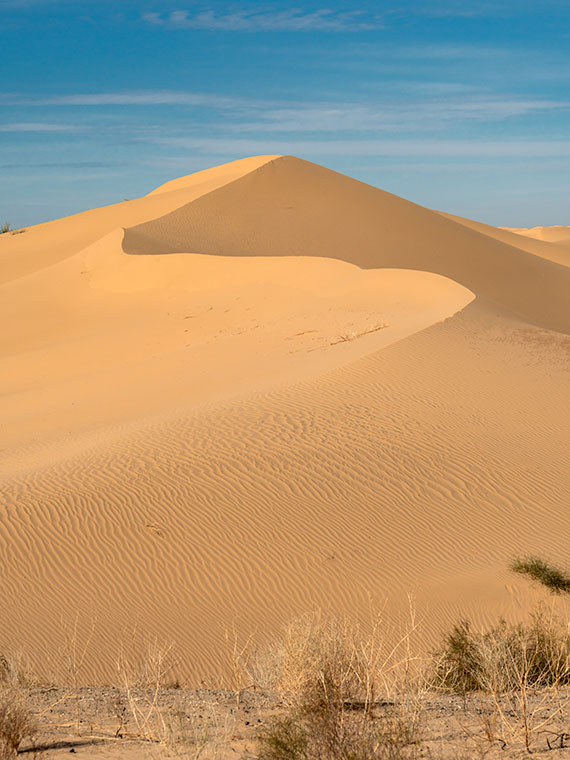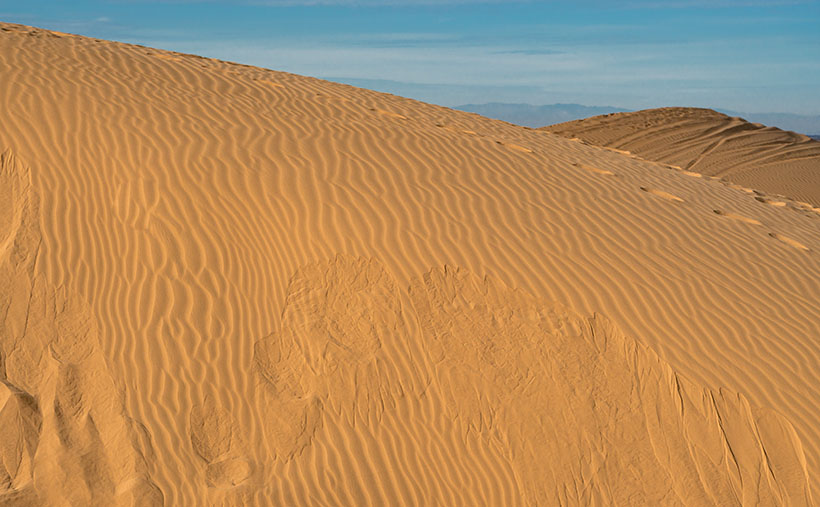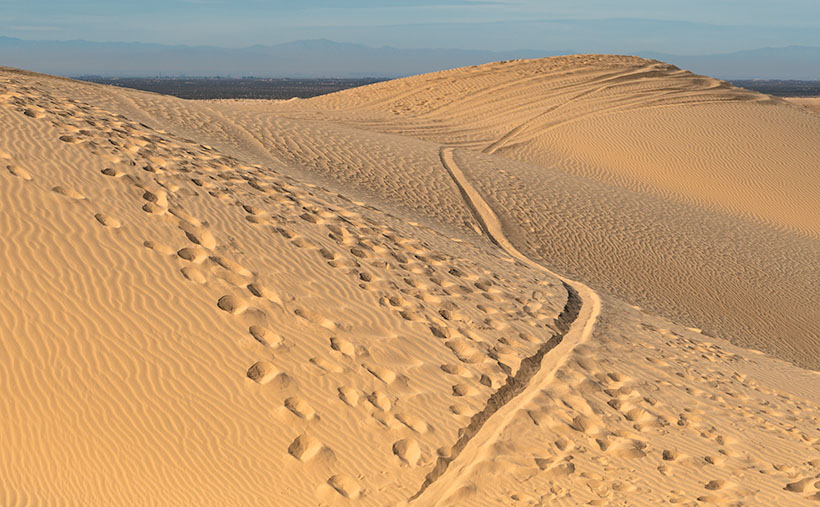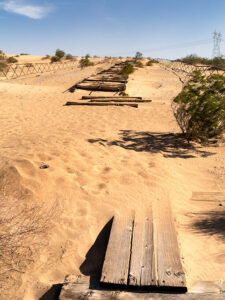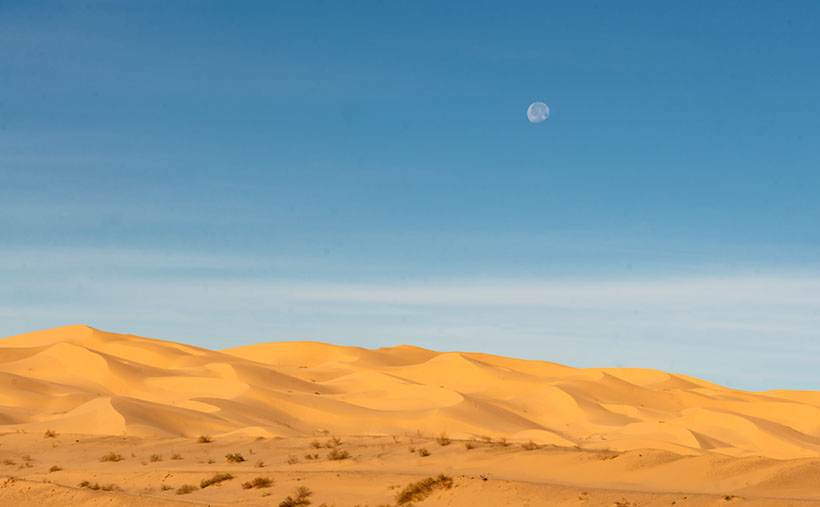It’s the end of January already, and we have a final image from the Algodones Dune Field to talk about before moving on to a new project. I’m not sure that I’m ready. At the beginning of the month, when I started writing about the Algodones Dune Field, I wasn’t sure there was enough information for five articles. But, there was enough for that and more—like the relationship between the dune field, Lake Cahuilla, and the San Andreas Fault. If I aroused your curiosity, you’re going to have to hit the books yourself.
After working on this week’s picture, I realized that shifting sand was also a metaphor for time passing (Wasn’t there a daytime soap called, The Sands of Time? If not, there should have been.) As I examined my photos of endless piles of sand, I wondered why someone hadn’t come up with a way to put it to use. That was until my brain’s hammer came crashing down with an obvious answer. They have, or had—it’s already been done. You see the device every New Year with a picture of father time holding an hourglass about to run out of sand; of course, an hourglass. Why didn’t I think of that?
I even bought one a long time ago when I was wet behind the ears. I was still in the Army and stationed in Pasadena, California. My brandy new and very young bride—neither of us could legally drink in bars at the time—leased a furnished apartment three blocks north of Colorado Boulevard for a year. We didn’t need furniture as we set about nest building, so we bought shiny things from our local head-shop. There were posters taped to the wall (we couldn’t put nails in the drywall), kitchen trinkets, an alpaca throw rug, and a three-foot-high hourglass.
It was harvest gold that matched our appliances. It was big enough that we used it as a side table. We regularly turned it over when friends visited, but that soon got boring. I still don’t know how long it ran because I couldn’t afford a stopwatch, and when I tried timing it with the stove clock, my ADD kicked in, and I forgot what I was doing. I believe it was somewhere between 45 minutes to an hour.
After four years, the hourglass was one of the things I got from that divorce. I don’t know what happened to it, but I suspect that it turned bright flaming red in the eyes of one of my subsequent wives and wound up at Goodwill (assuming they were that kind to it). It wasn’t like I immediately noticed the day it was gone; I simply realized that the clock was no longer part of the decorations.
With how precise we can measure things these days, you’d think building an ultra-accurate hourglass would be possible. We could sift sand to within one micron, machine a precise orifice, and calculate the right weight to make the sand run out within a nanosecond. The results would make a super-accurate timepiece—once. It would quickly become out of tolerance because it grinds the hole imperceptibly larger while the sand flows. I guess I’ll just stick with my trusty ol’ Timex.
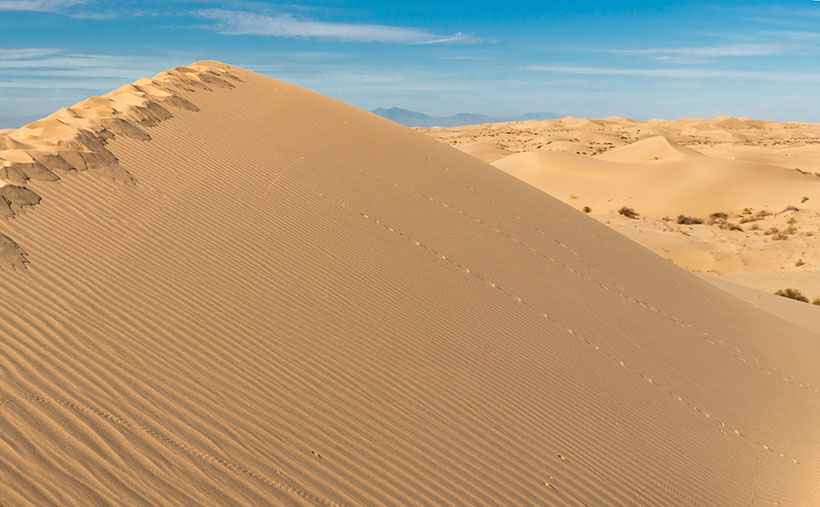
For this week’s picture, I wanted to show a semi-permanent record of my footprints in the sand. In real life, my tracks probably disappeared in hours—or days if the wind was calm. After taking last week’s photo, I headed back to the road. I turned before leaving the dune and shot this photo that I call My Tracks. The giant mess at the dune’s top is mine, and if you look closely, you’ll find other fainter tracks. Near the bottom are bug tracks, and there’s a set of coyote (or fox) tracks in the middle. There will always be some tracks in the dunes if you take time to look.
You can see a larger version of My Tracks on its Web Page by clicking here. Next week we move on to another location in search of natural beauty. Come back then and see where we landed.
Until next time — jw

